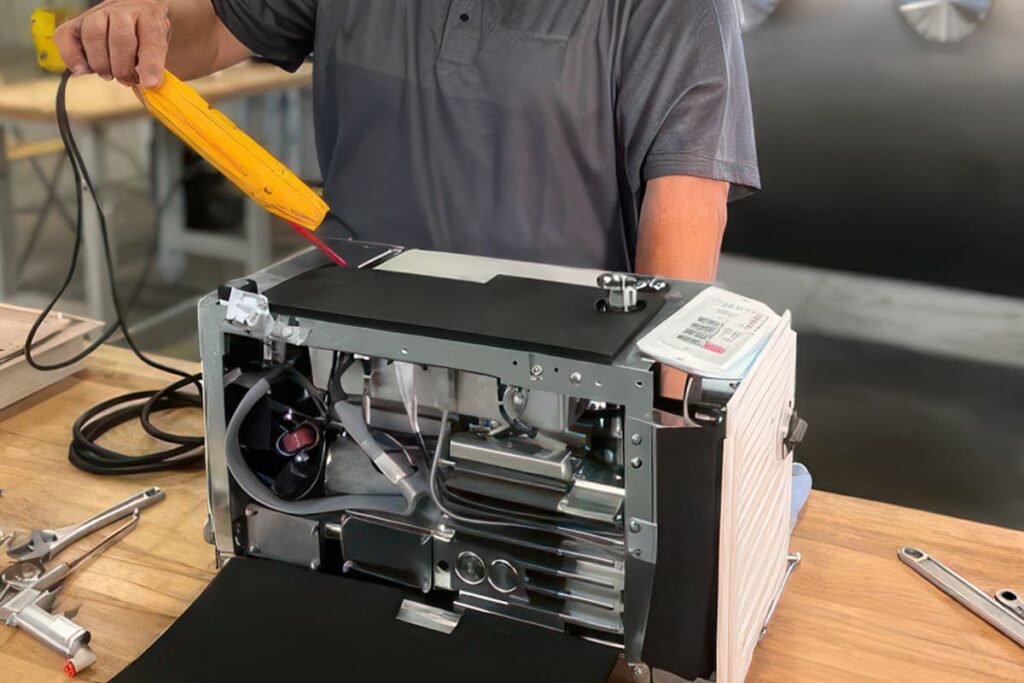Your pump is back from the repair shop, but the integrity of your entire production process depends on its performance. Putting a faulty pump back on the line can lead to failed batches, costly downtime, and a loss of confidence in your equipment.
The only way to be certain is to perform a definitive "blank-off" test using a high-quality digital vacuum gauge. This isolates the pump from all external variables and directly measures its ultimate pressure, telling you everything you need to know about the quality of the repair.
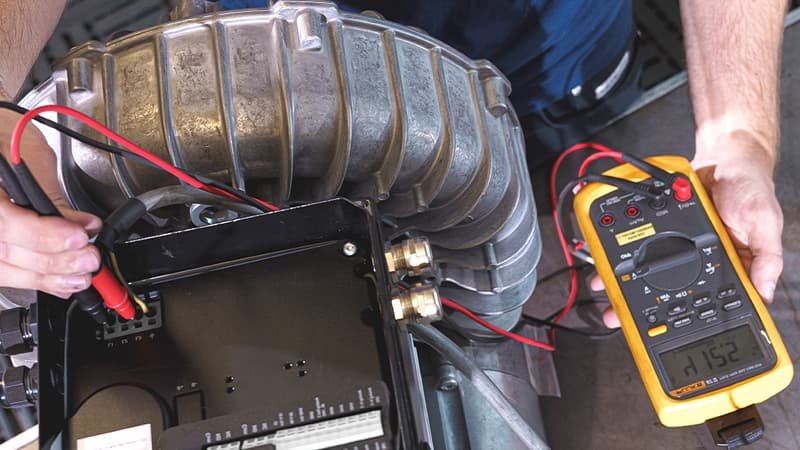
Across countless industrial vacuum applications, I've seen firsthand that "trust but verify" is the golden rule for repairs. A pump's performance isn't just about whether it runs; it's about its ability to achieve the deep vacuum required for your specific process, whether it's vacuum furnace brazing, distillation, or coating. This test replaces guesswork with hard data, giving you the confidence to put that asset back into critical service.
What test equipment is non-negotiable for an accurate diagnosis?
You can't get an accurate result with inaccurate tools. Using the wrong gauge or contaminated oil will mislead you, causing you to fail a good pump or pass a bad one.
You absolutely must have a high-quality digital vacuum gauge (micron or Pirani gauge) and a fresh, sealed container of the correct, manufacturer-specified vacuum pump oil. For industrial pumps, the oil type is especially critical.

From my experience, trying to test a pump without these two items is a complete waste of time. They are not optional; they are the test.
- The Digital Vacuum Gauge: For industrial pumps, you need a gauge capable of accurately reading down to at least 1 micron (~1.3 x 10⁻³ mbar). A standard analog Bourdon gauge is completely useless for this task. A high-quality thermocouple, Pirani, or capacitance manometer gauge is the professional standard for this job. Ensure its calibration is current.
- Clean, Correct Oil: This is paramount. An industrial pump might be specified for a standard hydrocarbon oil, a more stable synthetic PAO, or even an inert, expensive PFPE oil for reactive gas processes. Using the wrong type, or oil from an open container that has absorbed atmospheric moisture, will ruin your test results before you even begin. The vapor pressure of the oil itself will become the limiting factor of your test.
How do you perform the definitive "blank-off" test?
You need a simple, repeatable test that gives you a clear pass or fail. A complicated procedure with too many variables can give you the wrong answer and send you down a diagnostic rabbit hole.
To perform a blank-off test on a two-stage oil-sealed pump, connect a trusted digital vacuum gauge directly to its inlet, open the port, and turn the pump on. A healthy, properly repaired pump should pull down to the single-digit micron range (below 10 microns / 0.013 mbar).
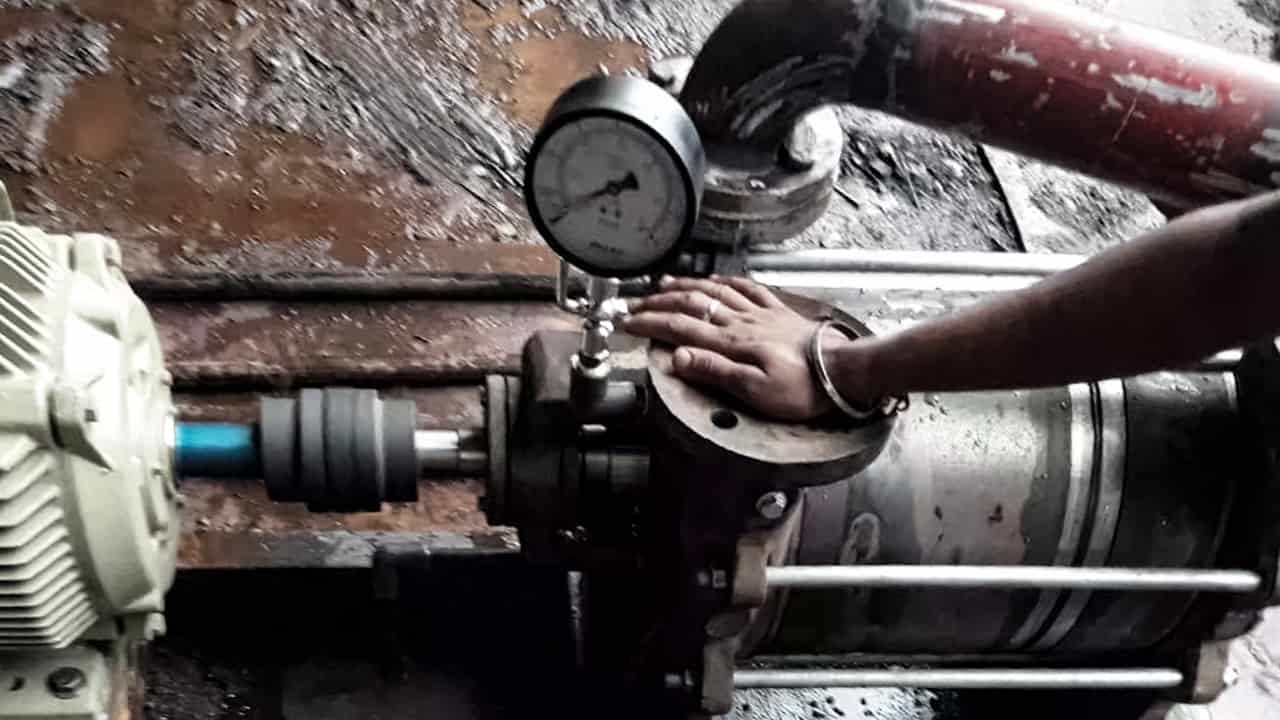
The entire purpose of the blank-off test is to eliminate all external factors. This is a pure test of the pump's mechanical ability to create a vacuum. The process is simple:
- Prepare the Pump: Ensure the pump has a fresh charge of the manufacturer-specified oil. Confirm the motor's wiring and rotation direction are correct.
- Connect the Gauge: Turn the pump off and connect your vacuum gauge directly to the pump's main inlet port using a robust, leak-free adapter (e.g., a KF flange to NPT adapter or a short, flexible metal hose).
- Run the Test: Open the inlet port that the gauge is connected to, and ensure any other ports are capped. Turn the pump on and let it run for at least 15-20 minutes to fully warm up, stabilize, and allow the fresh oil to "outgas" any dissolved air.
- Record the Result: The final, stable reading on the gauge is the ultimate pressure, which reflects the pump's internal condition.
How do you interpret the blank-off test results?
You've run the test, but the number isn't a perfect "zero." You're looking at a reading and you're not sure if it's "good enough" or a clear sign of a problem.
A healthy two-stage pump should reach below 10 microns (~0.013 mbar). Readings from 10-50 microns suggest minor issues. A pump that cannot get below 100 microns (~0.13 mbar) after an oil change has failed the test.
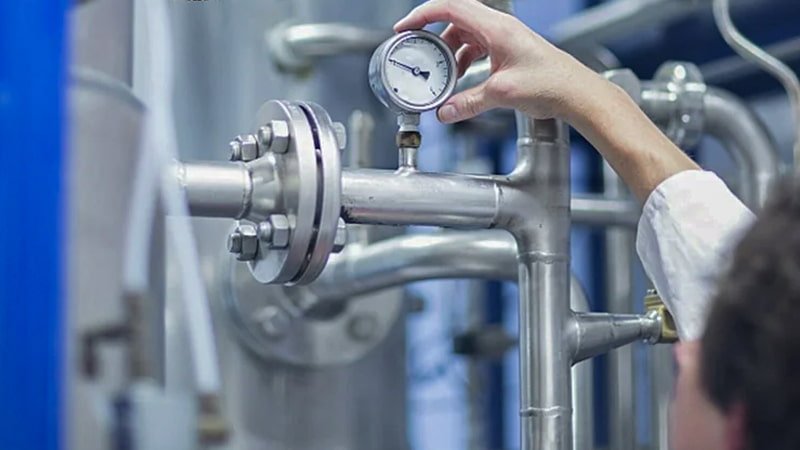
The ultimate pressure a pump can achieve tells a detailed story about its internal condition. Here’s how I break down the results for my clients:
| Blank-Off Reading (Microns / mbar) | Diagnosis | Recommended Action |
|---|---|---|
| < 10 microns / < 0.013 mbar | Excellent. The pump is mechanically sound and the repair was successful. | Put the pump back into service with confidence. |
| 10 - 50 microns / ~0.013 - 0.067 mbar | Marginal. The pump is likely functional but not perfect. The cause is often slightly gassy oil or a very minor internal leak. | Perform a second oil change with fresh oil. If the reading persists, the pump may be usable for less critical processes but should be monitored. |
| 50 - 100 microns / ~0.067 - 0.13 mbar | Poor. This indicates a significant issue, likely beyond just contaminated oil. | Change the oil. If the reading does not improve significantly, the pump has a problem. |
| > 100 microns / > 0.13 mbar | Failed. The pump has significant internal wear (vanes, seals, scored surfaces) or a major internal leak between stages. | The repair was unsuccessful, or another major component has failed. Do not put into service. |
How do I perform a "3-Phase" test for a complete diagnosis?
The blank-off test confirms the pump's ultimate pressure, but what about its ability to handle gas flow or hold a vacuum? For a truly comprehensive diagnosis, I recommend a 3-phase test.
The 3-phase test adds two crucial steps: a gas ballast test to check the oil's condition and a leak-up rate test to confirm the integrity of the pump's seals and gaskets.
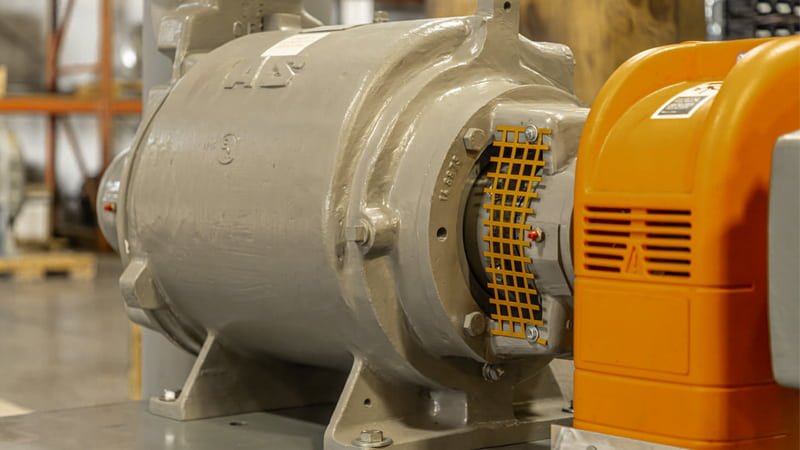
This more advanced test gives you a complete picture of the pump's health.
- Phase 1: Standard Blank-Off (As above). Run the pump until it reaches its stable ultimate pressure. Let's say it stabilizes at 8 microns.
- Phase 2: Gas Ballast Test. While the pump is running, fully open the gas ballast valve. The pressure should rise significantly (e.g., to 100-500 microns) as air is introduced. Now, close the gas ballast valve. The pressure should return to its original ultimate pressure (8 microns) very quickly, typically in under a minute. If it struggles to return to the base pressure, it indicates the oil is saturated with moisture or other contaminants.
- Phase 3: Leak-Up Rate Test. Once the pump has returned to its ultimate pressure, close a valve between the gauge and the pump inlet to isolate the gauge. Turn the pump off. Watch the gauge for 5 minutes. A perfectly sealed pump and gauge setup will show a very slow rise in pressure. A rapid rise indicates a leak, either in your test fittings or, more worryingly, through the pump's internal shaft seals or gaskets.
What other signs point to a definite pump failure?
Your pump passed the blank-off test, but it's making a terrible noise. The ultimate pressure is only one part of the story; you also have to use your eyes and ears.
A pump can pass a vacuum test but still be failing. Loud, irregular mechanical noises like grinding or clattering, or rapid degradation and discoloration of the new oil, are undeniable signs of a serious problem.
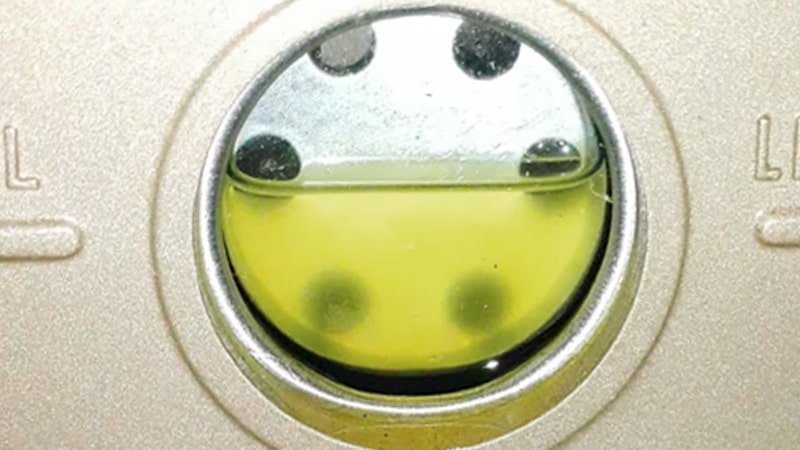
When a pump is truly failing, it gives you clear signals beyond the gauge. Here is what I look for to condemn a pump, even if the vacuum reading seems okay at first:
- Loud Mechanical Noises: A healthy pump has a steady hum. A loud grinding or high-pitched whining sound points to failing bearings that will soon seize. A sharp, irregular clattering or knocking sound often means a broken vane or a failed motor coupling. These are major internal failures that demand immediate shutdown.
- Rapid Oil Degradation: Watch for oil that turns dark or black very quickly. This indicates extreme thermal breakdown from overheating. If the oil becomes thick and sludgy, it may be reacting with process gases being pulled into the pump. If you see metal flakes or debris in the oil, it's a sign that internal components are actively destroying themselves.
Final Verdict
The blank-off test is your ultimate lie detector. By using a high-quality gauge, clean oil, and adding a gas ballast and leak-up test, you can definitively assess your industrial pump's health. This allows you to make a smart, data-driven decision about whether to trust that repair or invest in a new, more reliable asset for your facility.

